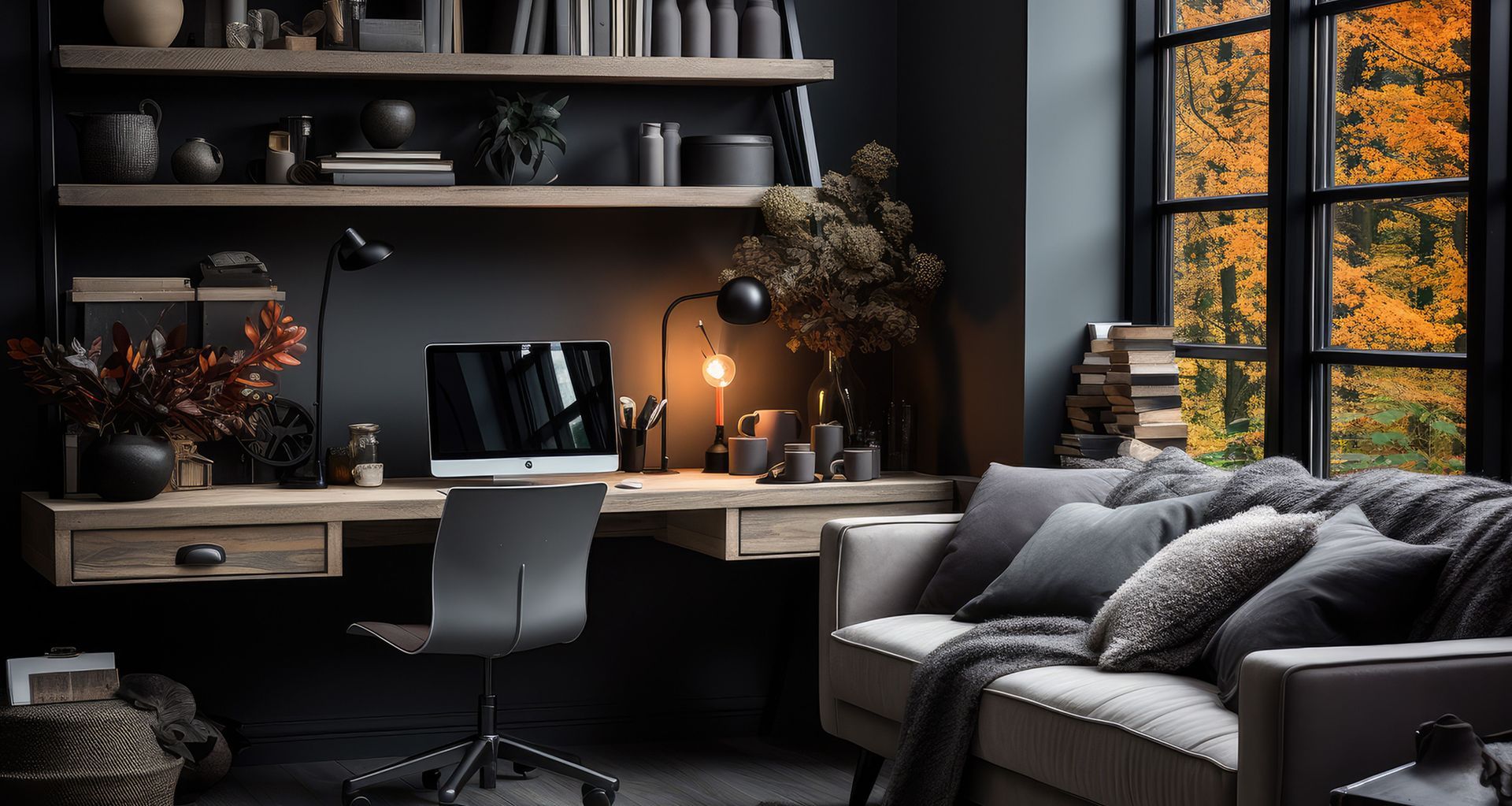Designing for a Work-Life Balance

Accelerated by the global COVID-19 pandemic, remote work has become increasingly prevalent, and more people are transitioning to work from home. However, the integration of personal and professional life can pose a challenge, making it essential to create clear boundaries in order to achieve a healthy work-life balance.
LOCATION
When designing a home office, it is important to consider a location that is separate from the rest of the living spaces. This assists in creating a tangible divide, setting distinct physical and perceptual boundaries between work and personal life. In most cases, a fully detached office is not feasible. Therefore, an optimal location within the home should offer both convenience to amenities and sufficient privacy to reduce interruptions from other household activities.
PRIVACY
Creating a secluded and concentrated atmosphere within the workspace is essential. This can be achieved through the use of sound-dampening components such as acoustic panels or window treatments. This minimises external disturbances and establishes a calm ambiance. Additionally, implementing room dividers or partitions can provide a sense of privacy and visual separation.
BIOPHILIC DESIGN
Integrating biophilic design elements, such as plants and natural light and ventilation, can cultivate a serene atmosphere and enhance wellness, creativity, and focus. When optimising natural ventilation and harnessing the influx of natural light, the space will blend with its surrounding. A harmonious connection with nature creates an environment in which occupants can feel vitalised. Furthermore, providing outdoor views can create a sense of connection with the external environment and diminish sentiments of seclusion. To read more about these concepts, refer to our previous blog entitled The Importance of Biophilic Design.
A harmonious connection with nature creates an environment in which occupants can feel vitalised.
FURNITURE & STORAGE
The application of ergonomic design principles within a home office are essential for facilitating productivity and minimising the risk of strain and injury. This encompasses specifying furniture, lighting, and storage solutions that are suitable for their intended use. Ergonomic furniture offers adaptable, customisable, and supportive features that promote correct posture and comfort. In turn, reducing the risk of musculoskeletal injuries associated with prolonged sitting. A balanced blend of natural and artificial lighting is imperative in an office setting. Correct lighting will prevent eye strain, fatigue, and headaches, and promote a positive influence on mood, alertness, and overall wellbeing. Additionally, well-designed storage solutions enhance spatial organisation and contribute to a functional and optimised work environment.
PERSONAL TOUCH
Personalisation of a home office design can result in various benefits, including increased productivity, stimulation of creative thought, and overall comfort and enjoyability of the space. Elements such as artwork, décor and personalised items can further enhance the overall aesthetic and functional quality of the workspace.
Designing a home office that creates a clear distinction between personal and professional life is essential for achieving a healthy work-life balance. By incorporating just a few of the items listed in this article, you can ensure an enjoyable work experience at home. One that you will look forward to day after day.
